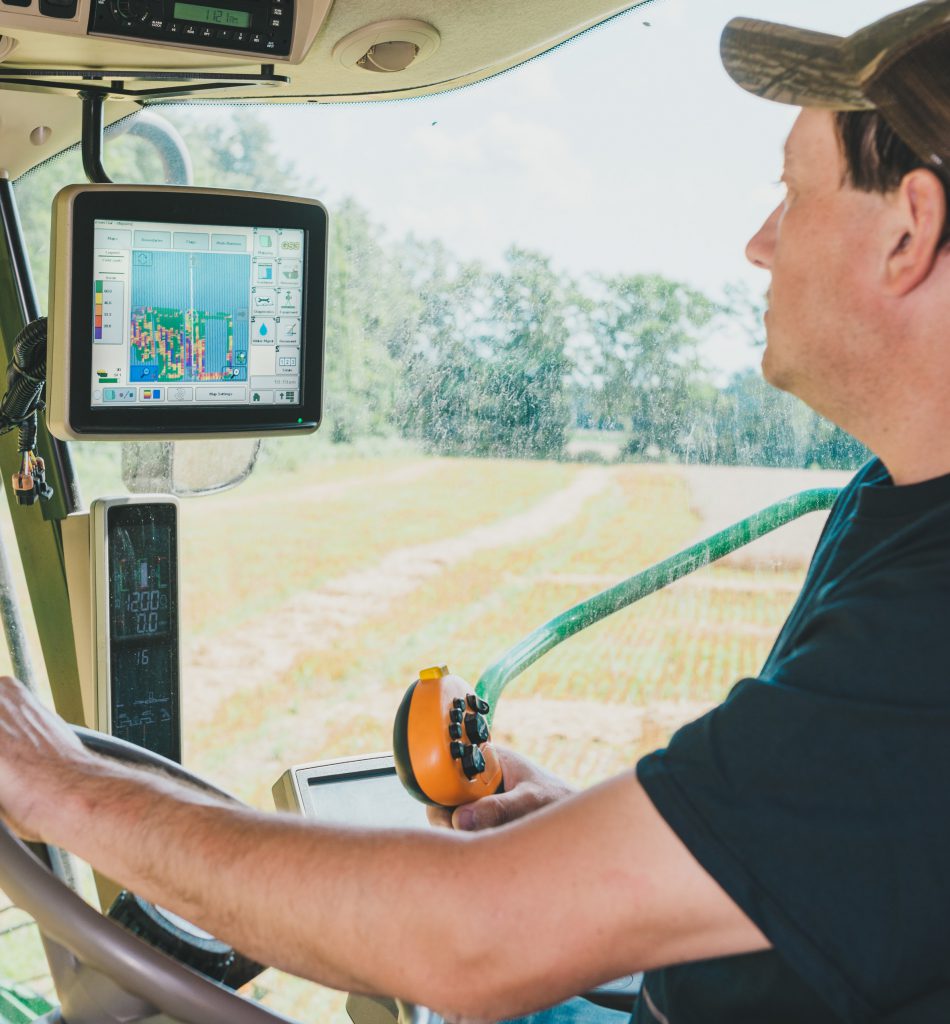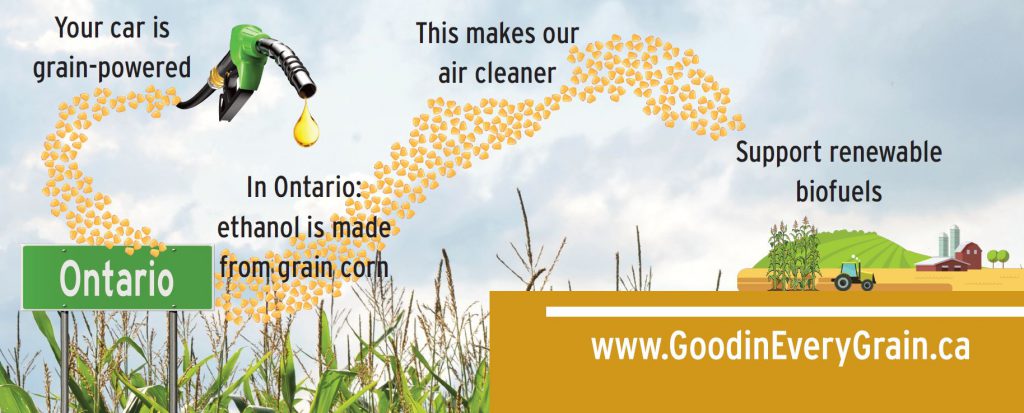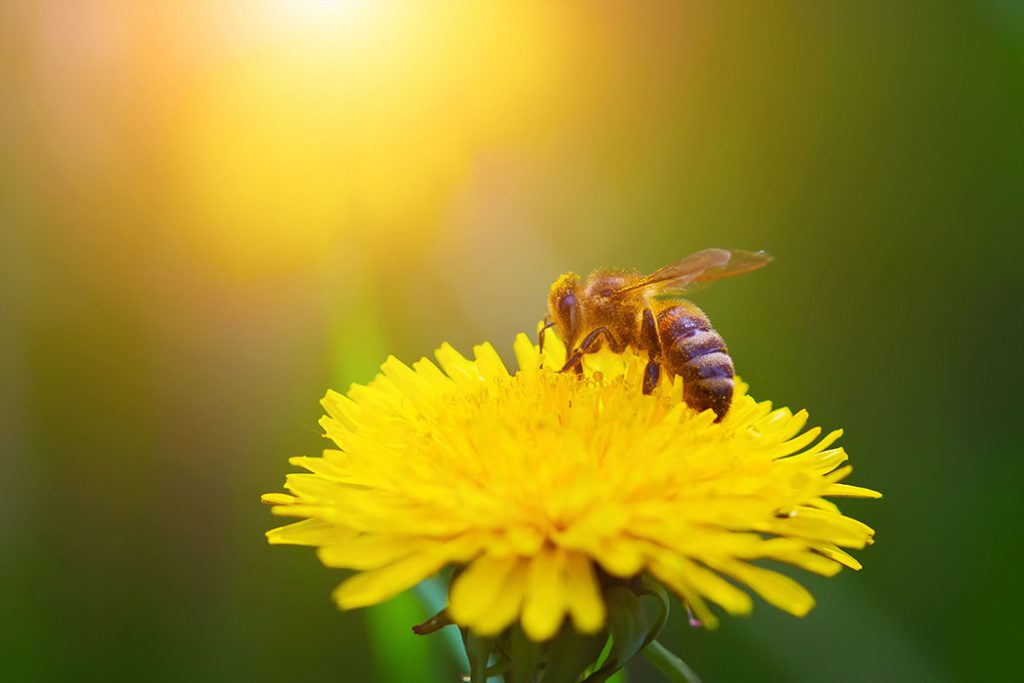Farmer FAQs

The answers to your most important questions about the practice of grain farming:
Do Ontario grain farmers spray crops with roundup products to manage weeds and insects, and as a dessicant to dry crops after they have ripened?
Farmers across Ontario make many crop management choices throughout the season. Ontario has a very diverse environment, so different regions of the province have different weather, soil, insect, disease, and weed pressures. There are a variety of pesticides available for managing these issues – roundup is an example of one of these products.
Desiccating is a practice used to dry crops like canola, cereals, and soybeans. This is not a common practice in Ontario, but can be helpful in certain crop conditions – for instance, a wet harvest season or very late crop. Desiccants are applied according to defined timelines (days or weeks depending on the crop) prior to harvest.
In order to use any pesticide, Ontario farmers must complete pesticide training and be certified to use the products.
What’s so scary about GMO?
This answer was contributed by Matilda Miranda, freelance copywriter and content strategist.
GMO stands for “Genetically Modified Organisms,” and for many who hear those words, it automatically conjures up scary images of mutated plants and animals ready to wreak havoc on our bodies and the environment.
“There’s been a well-organized campaign of deliberate misinformation by a lot of anti-agriculture activist organizations,” says Dr. Stuart Smyth, an associate professor at the University of Saskatchewan.
According to Smyth, anti-GMO campaigns by high profile activist organizations have had a huge effect on how people view genetically modified [GM] foods and there’s data to back that up. A 2018 Dalhousie University study found that 34.7 per cent of Canadians polled believe GM foods aren’t safe to eat, but at the same time 44 per cent said that the health effects aren’t fully understood. This comes despite the fact that Health Canada puts all GM foods through a stringent safety assessment process, one that is based upon consultations carried out by the World Health Organization.
To date, Health Canada has approved over 81 GM foods for sale (including corn and soybeans), deeming them just as safe and nutritious as non-modified foods. GM foods don’t introduce unique risks and there have been no recorded cases of sicknesses or deaths resulting from their consumptionthus far. According to Health Canada, many of the issues (such as the transfer of allergens and toxins) raised by foods resulting from genetic modification are equally applicable to foods produced by conventional means for the short and long-term. However, since society sometimes conflates healthy and natural, there are retailers who charge more for GMO-free products. But that doesn’t make their products natural or any healthier than those products made from GM crops.
“Any farm is completely artificial. Even with organic farms, you strip away all the native vegetation,” says Pamela Ronald, a prominent plant geneticist and distinguished professor at the University of California. “Organic farmers also have to use pesticides. Some of those can be especially harmful, even if they’re dug up from the earth.”
Farmer Terry Daynard grows genetically-engineered corn and soybeans in the Guelph, Ontario-area. He believes that the hype built around “non-GMO” foods by retailers and organizations with a vested interest in non-GMO products has some people picturing the idealistic farms of yesteryear which simply don’t exist anymore.
“[People] envision that all of their food should come from a farm like their grandfather,” Daynard said. “They don’t connect the fact that if you were to grow food that [old] way, you couldn’t grow enough and it would be incredibly expensive.”
According to the census, one third of Canadians worked in agriculture back in 1921. Almost a century later, only 327,000 people were primarily employed in agriculture.
With farm numbers in steady decline since 1941, remaining farms are now bigger and run by fewer workers. Ronald agrees that Canadians and Americans are too far removed from agriculture and find it hard to imagine the challenges farmers face.
“Most of us aren’t farmers…It’s so far out that people can’t really understand how important genetic improvement is to the livelihood and health of people,” she said.
We might not realize it, but the science behind the GM plant breeding process is very similar to how plants have been traditionally bred for thousands of years. Smyth, who was granted the title of Industry-Funded Agri-Food Innovation Chair as a result of his years of research on sustainable agriculture, says you could go to your garden and pollinate a pumpkin flower with another flower, causing tens of thousands of genes to change. Plant breeders now are essentially doing the same thing, but since they use precise technologies like genetic modification, they’re only changing a handful of genes in a very controlled manner.
Take the banana Xanthomonas wilt (BXW) that hit Uganda in the early 2000s. This disease, which destroys the whole plant and contaminates the soil, has negatively impacted the lives of millions of people who rely on the country’s massive banana industry. In need of a solution, scientists went to work, discovering a trait in red peppers that resisted the wilt. They were able to introduce just that particular trait into bananas and create wilt-resistance. GM crops are currently banned in Uganda, but scientists and farmers are waiting for the country’s president to sign a biosafety bill that would allow them to commercialize these modified bananas in the coming years.
Plant breeders know specifically which trait(s) they want to improve using genetic modification, and according to Smyth, this can save crops (such as banana) from destruction, reduce the amount of time it takes to get those varieties to market and help to keep our food prices down.
So, how exactly are Canadian crops like soybean and corn genetically improved? A gene is introduced to soybeans that make the plant naturally glyphosate herbicide-resistant. That means less pesticides are needed to eliminate the weed threats, allowing farmers to use less herbicides overall. An organic insect controller, bacillus thuringiensis (Bt) bacteria, is inserted into corn. Bt was introduced 20 years ago after farmers like Daynard were hit with a severe European corn worm infestation that destroyed corn ears and kernel. Bt now protects the corn crop from this insect infestation.
“Breeders were trying to do something about it and finally a solution came along. That solution [Bt] still works,” Daynard said. “The technology works. It’s low cost and it uses fewer pesticides than before.”
Plants can be genetically modified with nutrients and made to withstand drought, frost and flooding. New research suggests that GM crops could allow humans to produce sustainable amounts of food despite climate change causing unpredictable weather patterns. Sadly, things aren’t so easy in the developing world, which is more susceptible to climate change and sometimes lacks availability of nutritious foods. But researchers have found at least one solution: golden rice.
It’s modified to be vitamin A-enhanced, unlike conventional rice, and could help save the lives of the 250,000 children who die from vitamin A deficiencies in the developing world each year. Unfortunately, anti-GMO activists vehemently oppose golden rice.
“The poorest people, who most need the technology, may be denied access because of the vague fears and prejudices of those who have enough to eat,” Ronald said at a 2015 TED conference. “We must focus on how we can help children grow up healthy, we must ask if farmers in rural communities can thrive and if everyone can afford the food.”
While Matilda was compensated for her work, her research, wealth of knowledge and ultimate opinions presented in this article are her own.
What does using ethanol or biofuel mean for me, and what does it mean for the environment?

Ethanol is fuel made by distilling grains. In the United States and Canada, ethanol is made from corn and biodiesel is made from soybean oil (usually in the form of used cooking oil). In other parts of the world, ethanol is produced with sugarcane, rapeseed oil, animal fat, and canola oil.
Ethanol is frequently used to supplement regular gasoline, and almost all gasoline in Canada contains some ethanol. This has reduced gasoline prices (relative to what they would have been without ethanol supply) by an average of $0.06-0.10 per litre in US studies. Ethanol now represents five per cent of the world’s gasoline supply. In 2010, the global production of fuel ethanol and biodiesel amounted to about 85 and 15 billion litres, respectively. In that year, Canada was responsible for 1.83 billion litres of ethanol and 110 million of litres biodiesel–and for the United States, 54 and 1.5 billion, respectively.
Ethanol production is more efficient and environmentally friendly in Ontario and the rest of Canada than it generally is elsewhere, when considering the cost of inputs used to grow corn, transportation costs, and production. Compared to the United States, Ontario corn ethanol production uses less synthetic nitrogen fertilizer, less lime, and little irrigation; all Canadian ethanol plants also use natural gas rather than coal as their energy supply.
According to recent studies, the substitution of ethanol into 10 per cent blends with gasoline results in a 62 per cent reduction in net greenhouse gas emissions on a caloric basis adjusted for differences between the caloric energy content of ethanol and gasoline. The 62 per cent reduction means an annual reduction of 2.3 million tonnes of GHG emissions or equivalent to the annual emissions from 440,000 cars. About two-thirds of this is in Ontario.
To learn more about ethanol and biofuel production in Canada, visit Grain Farmers of Ontario’s Food vs. Fuel page.
What are Ontario grain farmers doing to protect pollinators?

In 2015, new regulations restricting the sale and use of neonicotinoids, a specific type of pesticide widely used by farmers around the world, were passed by the Ontario government. Anti-neonicotinoid (or “neonic”) activists cited unproven claims that the pesticides were contributing to the decline of bees in the province. It is unlikely that bee numbers are even in decline (Statistics Canada reports that honeybee numbers in Ontario are up by almost 60 per cent since 2003), and to date there is no data to support the assertion that there is a correlation between bee mortality and neonics.
In Ontario, there are numerous risks to bee health, including varroa mites, lack of forage and nutrition, exposure to spray pesticides, climate, and diseases.
Farmers care a great deal about bees and recognize the importance of bees to the overall viability of farming and the food chain. That’s why grain farmers have been actively working to enhance bee protection, by collaborating with stakeholders like beekeepers and value-chain partners, to ensure a sustainable future for both bees and crops. Farmers are stewards of the environment, taking care of the ecosystem the best they can, in order to grow healthy, productive crops to feed and fuel the province.
Farmers are doing many things to help bees. In 2014, a new fluency agent was introduced for use in planting equipment. Over 90% of farmers used the new agent, which helps to keep the pesticide coating on the seeds – preventing the risk of dust that bees could be exposed to. In addition, many farmers added dust deflector systems to their planters to further ensure no dust enters the air. The grain industry has also taken action by improving seed bag labels and collecting empty treated seed bags for safe disposal.
You can learn more about bee health in Ontario at www.beesmatter.ca.
Do Ontario grain farmers grow GMOs?
Yes, Ontario grain farmers grow genetically modified (GM) soy and corn. However, they also grow conventional (non-GM) soy and corn. There is no such thing as genetically modified barley, oats, or wheat.
GM crops have been cultivated for more than two decades, and food produced from them has been eaten and enjoyed by billions of people worldwide with no harm to humans. GM crops help farmers fight plant pests and diseases, grow their crops with less water, and minimize inputs like fertilizer and spray herbicides. GM crops do not cause allergies, cancer, infertility, ADHD, autism, or any other diseases or conditions.
Health Canada and the Canadian Food Inspection Agency have declared that GM crops are as safe as non-GM crops. They are not alone in this view. Regulatory agencies around the world, as well as highly regarded international organizations like the World Health Organization, have all endorsed the safety of these crops. A GM crop can take up to 13 years of research and rigorous testing and cost close to $150 million before it is brought to market.
In May 2016, the United States National Academy of Sciences released its report, Genetically Engineered Crops: Experiences and Prospects, a holistic analysis of “the purported positive and adverse effects of [GM] crops”. The committee members responsible for the report evaluated 1,000 scientific articles, received input from scientists, industry, and environmental group, and took comments from the public throughout the process; after two years of research, the report concluded that GM crops are as safe as conventional crops. You can read the report here.
The decision to grow GM or conventional crops is one made by the individual farmer – they are not forced to grow any kind of seed by big companies. They choose their seed based on what they know grows best on their land, in their local climate, and according to consumer demand. Not all Ontario grain farmers grow GM corn and soy; for example, if their soil quality allows it (and a variety of other factors), farmers can grow “Identity Preserved” non-GM soybeans that command a significant premium on the market.
